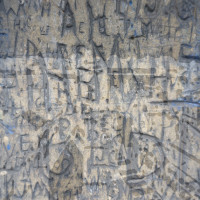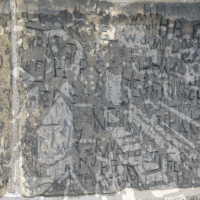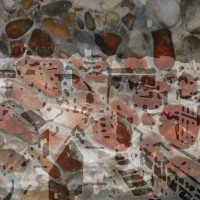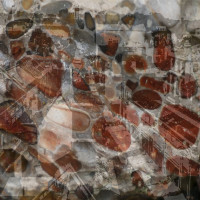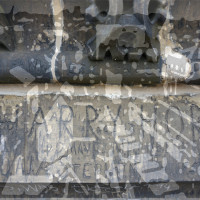ALBAN SERIES
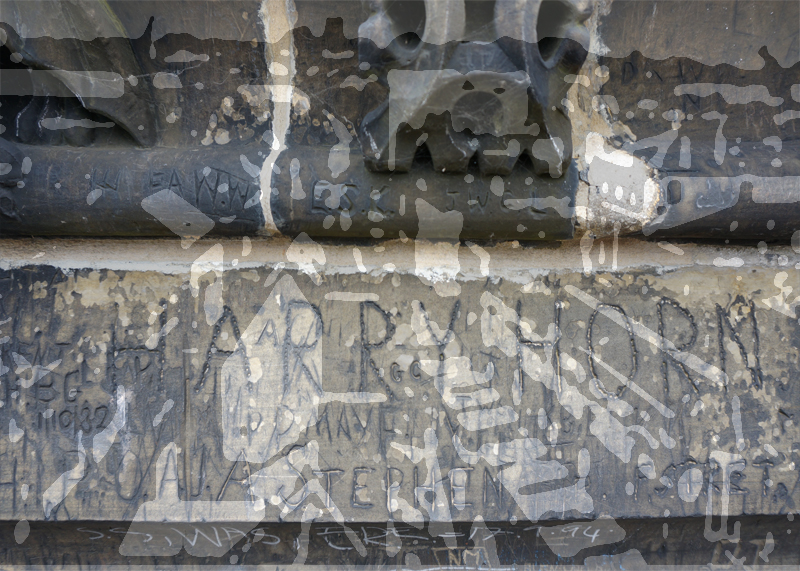
The Alban Series uses manipulated photographic images of street views from the top of the Clock Tower in my home town of St. Albans, England, blended with graffiti carved into the Clock Tower’s look out platform. Erected between 1403 and 1412, St Albans Clock Tower is the only medieval example in England. The belfry is said to represent the ambitions of the people of St Albans against the power of the abbot of St Albans, and was initially used as a lookout and a curfew, raising the alarm if the town was under fire.
There is a type of particularly hard Pudding Stone unique to Hertfordshire. It is thought that some stones originally marked sites of prehistoric tribal religious meeting places which were subsequently adopted as sites for churches. Pope Gregory in AD601 said in a letter to those bringing Christianity to Britain: “Do not destroy these stones the heathens venerate but incorporate them in the churches you build, thus will the heathens more readily come to you”.
There are several myths about the Hertfordshire Puddingstone. Superstitious countrymen called it Breeding Stone or Mother Stone believing it gave birth to pebbles and gathered fruit or children to itself. Some thought that the stones were alive, could move and had feelings and emotions. One myth relates that a block of puddingstone between Thorley and Bishops Stortford turned around when it heard the town clock in Stortford strike midnight. That at Kingsbury Mill is thought to have been dragged from the river Ver. “It will continue to grow as long as it stands.”
Puddingstones can be quite suddenly exposed in fields by rainstorms or sharp frost. Because of their mysterious appearance this caused a superstition among farmers that they grew in the ground. They were broken up but continued to appear as, like flints, they can still do today. Flints with holes through them supposedly possessed supernatural powers and were hung as charms against illness. They were hung in barns and on horses’ harnesses to keep away evil spirits especially “Night Hags”, (Macbeth’s “Silent black and midnight hags”), that were thought to get into stables and ride the horses all night, returning them lathered in sweat. This was supposed to be the cause of “sweating sickness.”

